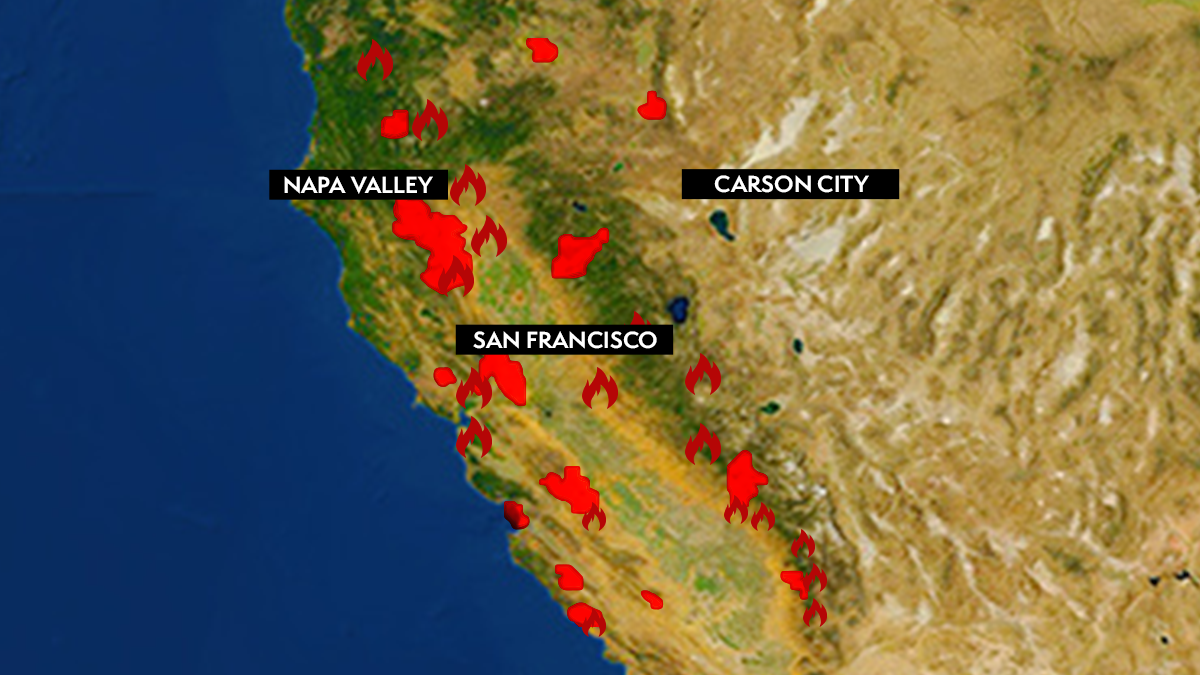There is slight relief on the horizon for weary residents of California. While the region continues to deal with unseasonably warm weather and low humidity on Monday, forecasters are predicting cooling temperatures along with a chance of precipitation across a wide swath of
What is on Tap This Week: Locally gusty winds are expected to persist through Wednesday along the western part of the Sacramento Valley, the North and East Bay, and down in the mountain ranges of Southern California. These winds will present more danger as firefighters continue to battle the front lines of the blazes. There are no current Red Flag warnings in the state on Monday.
A cool front arrived in the Pacific Northwest on Monday, bringing cooler temperatures and drier air. This system is expected to move into Northern California late Wednesday and into Thursday. The weather pattern brings the possibility of light rain in California in the middle of the week and heavier rains beginning on Friday and continuing through the weekend and early parts of next week.
While this rain is possible all along the West Coast, stretching from Seattle down to San Diego, the area most likely to see heavy rain is Northern California from Mendocino up through Washington state.
More Evacuations Due to Glass Fire: The Glass Fire continues to present major problems to fire crews in Northern California. This blaze is turning Napa and Sonoma Counties into a battleground as the flames rip through the famed winery region. The center of the fire is burning four miles east of Calistoga. The Glass Fire has burned over 65,580 acres as of the Cal Fire Monday morning update. Fire crews have only been able to bring the blaze to 30% containment. Residents of Napa County saw a new round of evacuations on Sunday.
The losses in the Napa Valley go far beyond the numerous wineries and restaurants that were lost over the last week in the popular tourism region. Some wineries have reported losing entire vintages as a result of the devastating fires. In addition to the flames literally burning the vineyards, the smoke is tainting many of the growing grapes. The year 2020 was already a difficult year for the current vintage due to drought conditions.
Zogg Fire Update: The deadly Zogg Fire is still burning in Shasta and Tehama counties, now at 76% containment after burning over 56,000 acres. This fire is blamed for the deaths of four people. A firefighter who was injured on Friday remains hospitalized.
Investigators are still working to determine the causes of both the Zogg Fire and the Glass Fire. These blazes blew up September 27 and spread quickly, forcing the evacuations of thousands of people. The good news is that while 30,000 people are still under evacuation orders due to the Glass Fire, this number is down from the 70,000 figure earlier in the week.
Elsewhere in the State: Here is an update on just a few of the other major wildfires causing severe issues in California.
- Creek Fire – This massive fire has been burning in the Sierra National Forest since September 4. The blaze has consumed over 322,000 acres, destroyed 852 structures, and is 48% contained.
- August Complex Fire – With a tally of over one million acres burned, the August Complex Fire carries the distinction of being the largest fire in California history. Currently burning in Colusa, Glenn, Lake, Mendocino, Tehama, and Trinity counties, the August Complex Fire is only 54% contained.
- Bobcat Fire – Firefighters continue to make good progress with the Bobcat Fire, burning in the Angeles National Forest in Southern California. While evacuations are still in place for some residents, the fire is now 88% contained after burning over 115,000 acres.
There have been over 8,300 recorded wildfires in California since the beginning of the year. These fires had destroyed over 4 million acres while claiming the lives of 31 people. In addition, the flames have burned over 8,600 structures, causing immense devastation throughout the region. According to Cal Fire, the acreage burned in 2020 is 26 times greater than the number of acres burned in 2019, proving that this fire season is indeed a historic event. To put it into perspective, this landmass is greater than the state of Connecticut.






